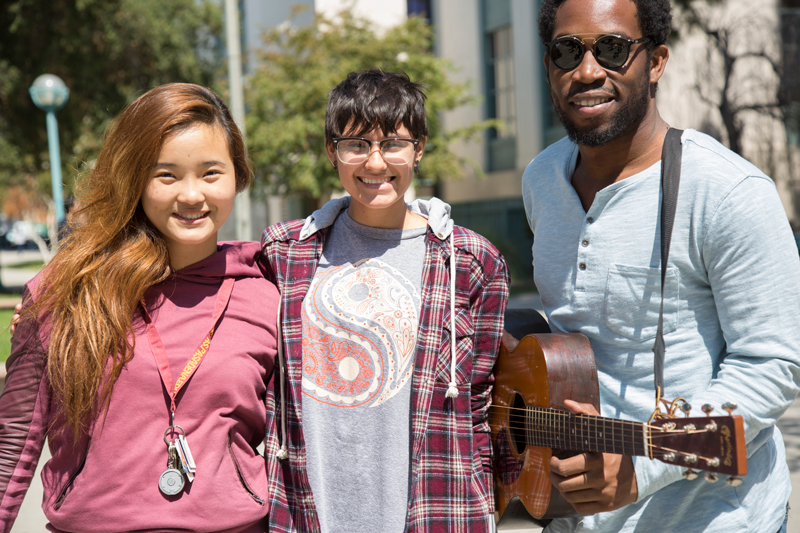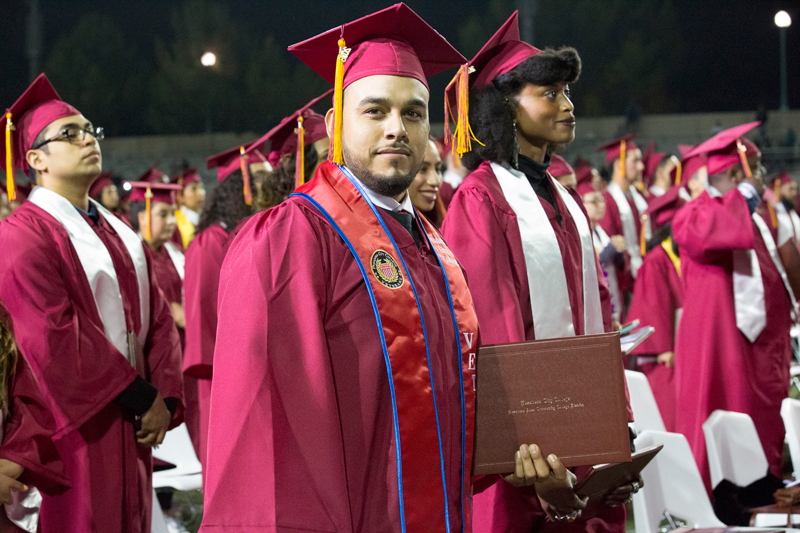Since 1924, Pasadena City College has provided the West San Gabriel Valley with a high-quality, innovative learning environment that inspires student success. Our academic programs encompass a variety of degrees, transfer programs, certificates of achievement, and occupational skills certificates that challenge students and support progress toward their goals. Widely recognized as a transfer leader, PCC is one of California’s top schools for transfers to local universities, including the CSU and UC system, USC, Art Center College of Design, Caltech, and more.

The main college campus occupies a 53-acre site, while the Foothill Community Education Center and Child Development Center are located in separate nearby off-campus facilities. Due to the geographic size of the District, PCC has two additional satellite sites -- the Rosemead Center and its newest site, PCC Northwest at John Muir High School.
The mission of Pasadena City College is to provide a high quality, academically robust learning environment that encourages, supports and facilitates student learning and success. The College provides an academically rigorous and comprehensive curriculum for students pursuing educational and career goals as well as learning opportunities designed for individual development. The College is committed to providing access to higher education for members of the diverse communities within the District service area and to offering courses, programs, and other activities to enhance the economic conditions and the quality of life in these communities.
Strengths
PCC can boast many institutional strengths that distinguish it among its peers, both in the state and across the nation. Among them are:
- A highly multicultural student body:

- Annually, at 49%, the College achieves recognition for one of the highest rates for transfer degrees to baccalaureate level institutions, both in California and across the nation. Additionally, PCC boasts a 52% bachelor's degree attainment rate for Pasadena graduates who transfer to a four-year university, compared to 42% nationally.
- The College is well known for national mathematics and forensic honors, as well as its extensive study abroad opportunities.
- PCC was once again named one of ten national finalists for the 2019 Aspen Prize for Community College Excellence, widely recognized as the nation’s premier honor for two-year colleges. The Aspen Prize recognizes institutions for their outstanding outcomes in four areas: student learning; certificate and degree completion; employment and earnings; and high levels of access and success for minority and low-income students.
- PCC is ranked by the Military Times as the top community college in California for military veterans, and the College is similarly ranked among the top community colleges in the nation. The PCC Courier is a perennial award winner.
- Twelve students are elected annually by the PCC Associated Students to represent and advocate on behalf of the student body. There are 80 student clubs and organizations representing the interests of a culturally diverse student population.
- In February 2017, the Accrediting Commission for Community and Junior Colleges of the Western Association of School and Colleges reaffirmed PCC’s status as a fully accredited institution.
Opportunities and Challenges
The District currently faces a number of opportunities and challenges that will be the focus of the Superintendent/President, including the following:
- Capture the imagination of a diverse campus community and inspire the college’s future with boldness, excitement, and confidence;
- Transform the College into a more agile and forward-looking 21st century institution that is responsive to the needs of an increasingly multicultural and multiethnic student body;
- Build strong bridges and the effective working relationships with and between the Board of Trustees and the College’s internal constituencies to accomplish goals;
- Be PCC’s enthusiastic advocate in the District, the region, state, and nation, by creating new and strengthened collaborative relationships between the College and a wide range of community organizations, businesses, cultural institutions, and educational institutions in the San Gabriel Valley and the Los Angeles basin;
- Expand outreach to ensure the college is distinguished for attracting, retaining, and effectively serving the students at all high schools within the District;
- Achieve the appropriate balance among the College’s three major educational emphases: degree/transfer programs, Career and Technical Education programs, and basic skills preparation;
- Strengthen partnerships with transfer institutions to improve practices that increase student transfer and overall completion of baccalaureate degrees;
- Lead the College in implementing Guided Pathways, the Pasadena Promise and other student success initiatives emerging from the California Community College System’s Vision for the Future;
- In light of the new funding formula for California Community Colleges, act effectively and creatively with the fiscal constraints and budget uncertainties associated with the evolving funding models;
- Regularly update the Strategic Master Plan to stimulate and guide timely institutional planning: academic planning, facilities planning, technology planning, human resource planning and financial planning;
- Update the Facilities Master Plan to deliver an exceptional learning environment for another generation of student learning and success; and implement a more enhanced and systematic program of maintenance, renovation and replacement of outdated facilities;
- Implement timely improvements to the infrastructure for campus information technology to provide and maintain an up-to-date, centralized system that provides a technology-rich learning and administrative environment;
- Optimize the effectiveness of PCC’s human capital, developing skills and talents to increase the effectiveness of administrators, faculty, and staff, through periodic assessment, professional development, adaptation of the organizational structure and expansion of resources;
- Build methods, collaborations, and stakeholder development for the full range of diversity for all constituencies in the attendance area by responding to demographic changes and continuously assessing and improving services that support student achievement and continuing education;
- Uplift the campus climate with an emphasis on shared purpose and participation in shared governance. Integrate programs and activities addressing equity, excellence, and sustainability in all facets of the College’s and the District’s operations.

Further Resources
The District makes available a wealth of information regarding its students, employees, and community. The following links offer some highlights of these resources:
- College summary
- Organization and governance
- Board of Trustees
- Academic Senate
- Classified Senate
- Management Association
- Associated Students
- College Council
- Council on Academic & Professional Matters
- District organizational chart (PDF)
- Institutional Effectiveness information
- Student demographics and success data (PDF)
- Student equity information
- Campus climate survey (PDF)
- Integrated planning and resource allocation
- Budget information
- Accreditation
